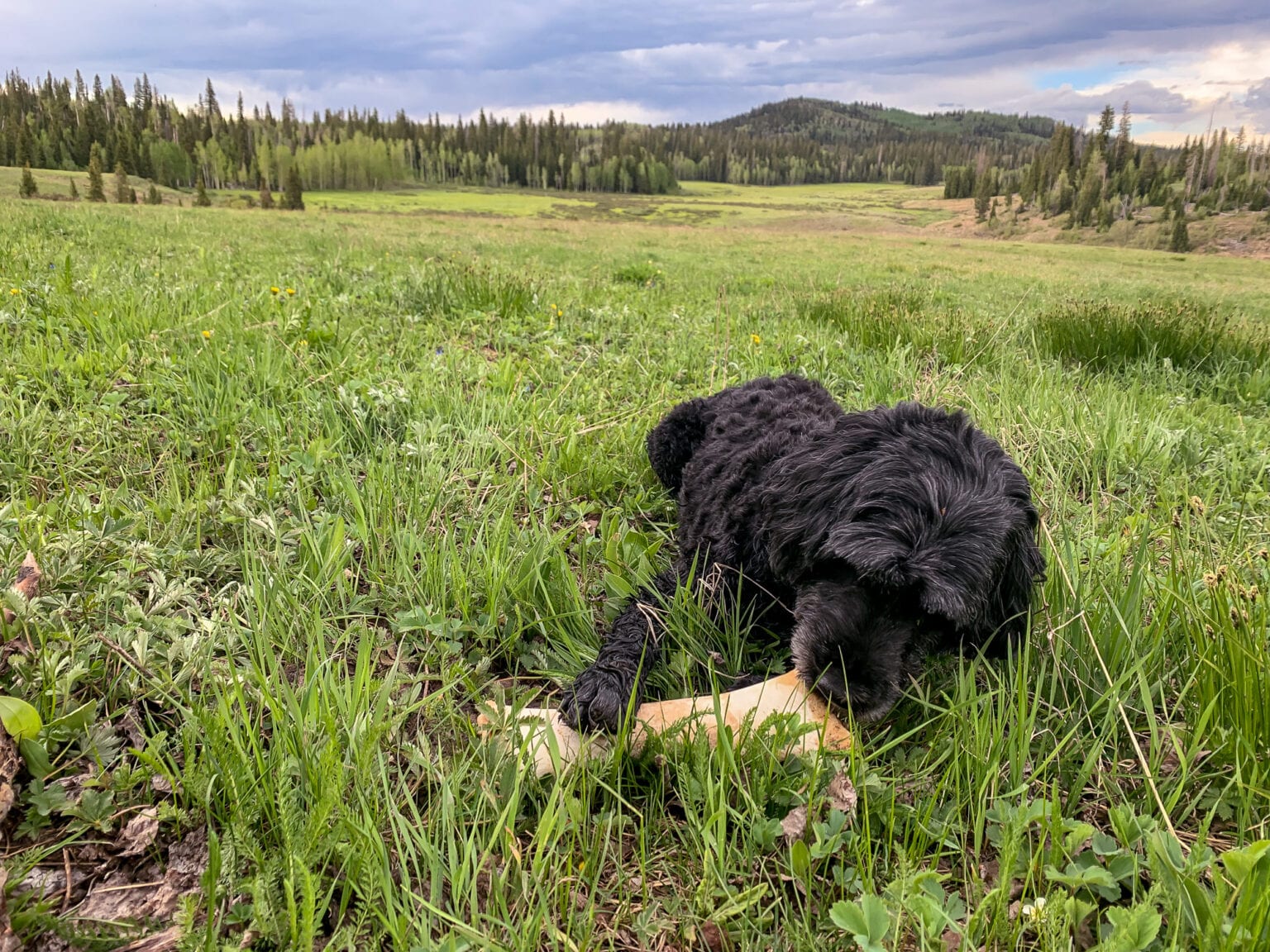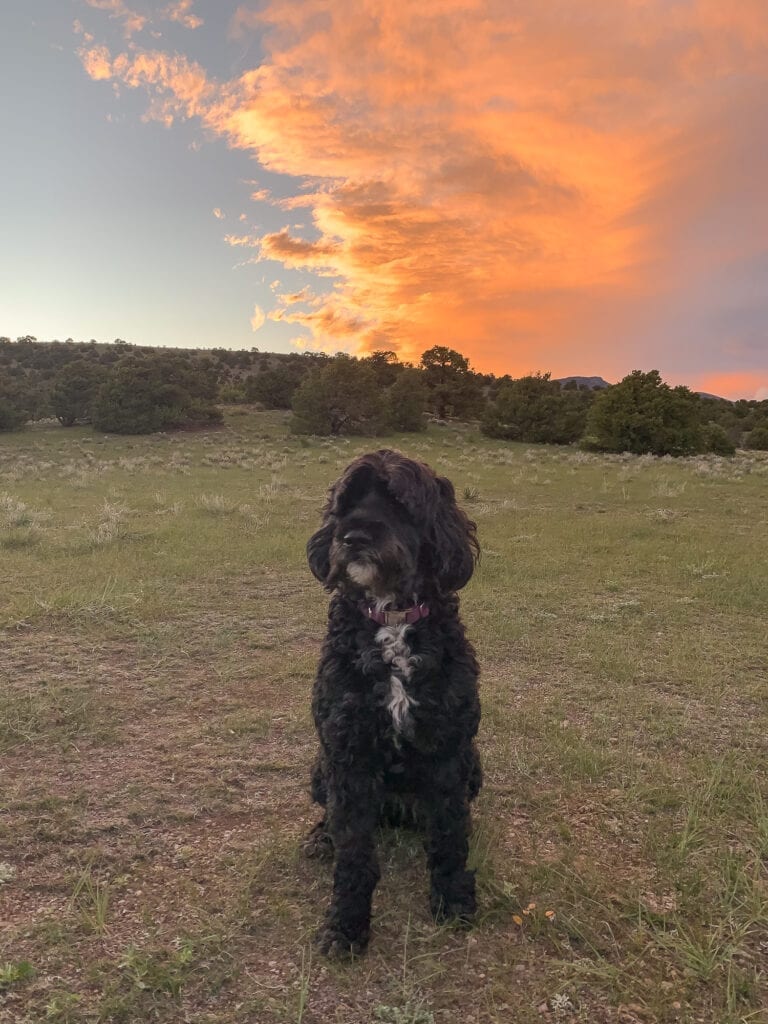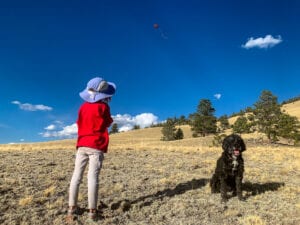Camping with dogs

For many of us, a camping trip wouldn’t be the same without our trusty canine companions. Dogs adore frolicking in the outdoors, and camping is a great opportunity for scratches, snuggles, and general quality time with our pooches.
So what do you need to know about bringing your dog camping? It’s important to plan ahead so you’re prepared to abide by rules, ensure your dog and wildlife are safe, keep your dog comfortable and healthy, and bring the supplies you need.
First off: rules. Always check that dogs are allowed at your chosen destination and whether leash or other rules apply. With dispersed car camping on Forest Service or BLM lands, dogs generally have free rein. Developed campgrounds on public lands often welcome dogs, too. But private campgrounds may or may not be dog-friendly. Where dogs are permitted in campgrounds, dogs may need to be kept leashed and they may need to sleep with you, not outside. Plus, proof of vaccination may be required. In the backcountry, including portions of most national parks, dogs may not be allowed. Certain hiking trails and beaches also are closed to dogs.
Safety is a critical consideration when camping with your dog. Leashing or staking a dog or using a tie-out or zip line are good ways to protect dogs from wild animals, poisonous and spiky plants, and vehicles. Securing your dog also helps keep wildlife safe. An important danger to be aware of is foxtails, which can work their way into your dog’s skin, causing serious infection or even death. Learn what grasses have foxtails, and try to avoid them and check your dog’s skin. Also keep dogs away from swift-moving water. For many safety-related reasons, it’s vital to never leave your dog at your campsite alone.
To reduce the risk that your furry friend will be lost, use a collar with your dog’s name, your name, and a working phone number. Of course, a microchip is also a good idea. If you’re staying at a campground, attach your campsite number to the dog’s collar. Bring along a current photo of your dog. And if your dog is lost, try leaving out an item of your clothing in a safe location—the dog may sniff out the clothing and return to it.
While dogs are fantastic camping buddies, it’s important to follow a few guidelines to make sure dogs don’t harm nature or bother other campers. Pick up dog waste, as poop can not only contaminate water supplies but also encourage the growth of invasive weeds. Don’t leave dog food out when it’s not mealtime, because it can attract wildlife. Keep your dog from barking (and also try to prevent situations which require you to yell frequently at your dog). When hiking, keep your dog under control and yield the right-of-way. Also make sure your dog stays away from kids, who may be skittish around canines.
Dogs are pretty good at making themselves comfortable, but you’ll want to keep a few comfort-related considerations in mind. Of course, bring enough food and water—possibly more than normal, if your dog will be extra-active. Bring a tent with enough space for your fur baby, along with an extra blanket. Other items you may want include a coat, brush, and favorite toy. See other helpful items further below.
Closely related to comfort is health. Before your trip, you may want to ask your vet about preventive measures for ticks, leptospirosis, and the like. Plan your drive so that you won’t have to stop places where your dog will be left inside a hot car. Check your pooch’s paw pads during the trip, especially if you’re active, to make sure that rough terrain, snow, or other conditions are not hurting your dog’s paws. Consider applying a wax to paw pads or using boots (see options below). If you’re backpacking, make sure your dog is up to the task, and remember that the dog’s own pack should weigh no more than a third of the dog’s body weight.
Below are a variety of products that may be useful when camping with your dog:
- Cleaning wipes to help keep your tent and sleeping bags clean, like Pogi’s Grooming Wipes
- Dog flotation device for swimming, like the Ruffwear Float Coat
- Light-up dog collar – check out the BSEEN LED Dog Collar
- Dog booties (we find that Pawz stay on better than true boots, plus they’re affordable so it doesn’t matter if one is lost)
- Wax for paw pads, like Musher’s
- Dog coat – consider the Ruffwear Quinzee or Kurgo Waterproof Dog Jacket
- KissBelly
- Pet first-aid kit – see Adventure Medical Kits
- Backpack for hiking, like the Ruffwear Palisades (backpacking), Ruffwear Approach (day), or Outward Hound Lightweight Dog Backpack (budget)
- Penn Pax, or cooling scarf, e.g., Stock Show
- Bag for discreetly carrying poop – see the Dicky Bag
- Tick remover such as the Tick Key
- Dog sleeping bag, like the Hurtta Outback Dreamer
- Dog sleeping bag attachment – see the Barker Bag







